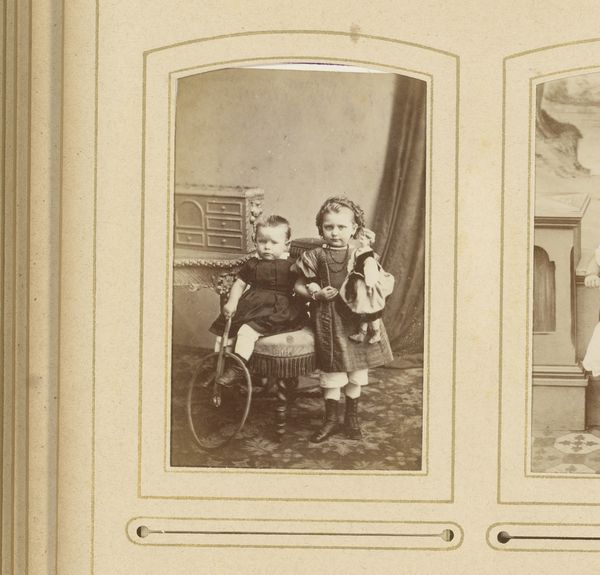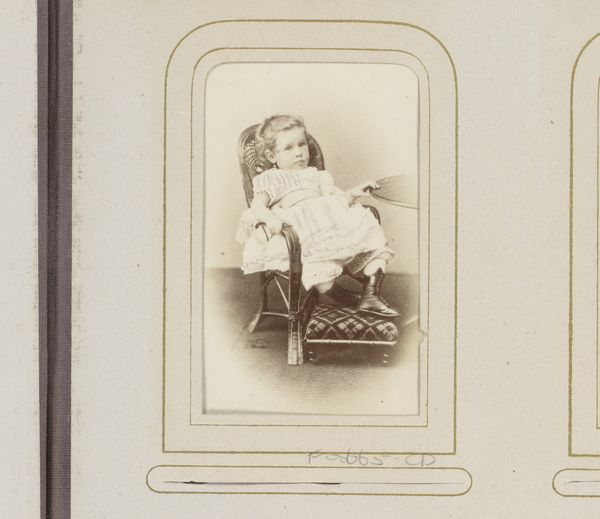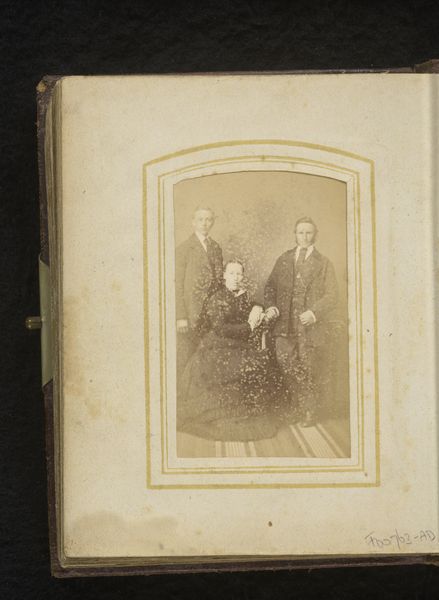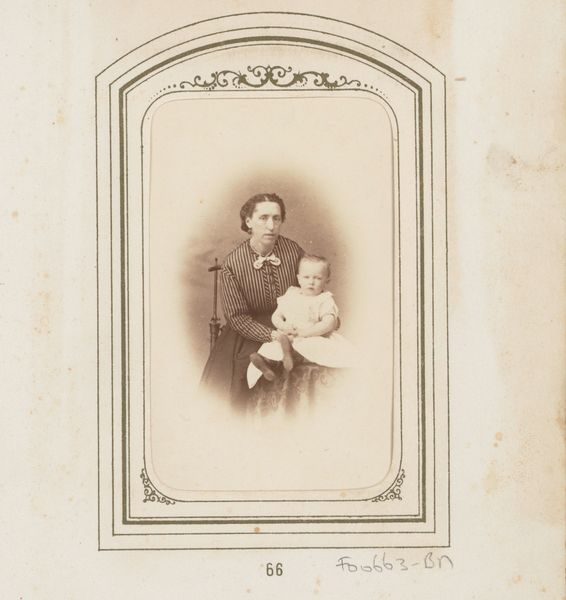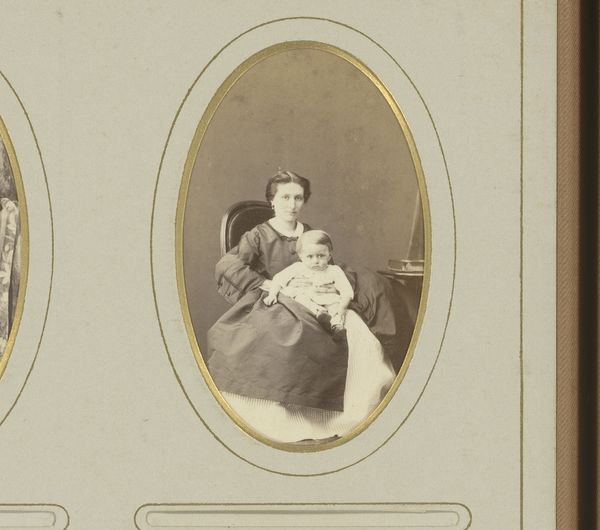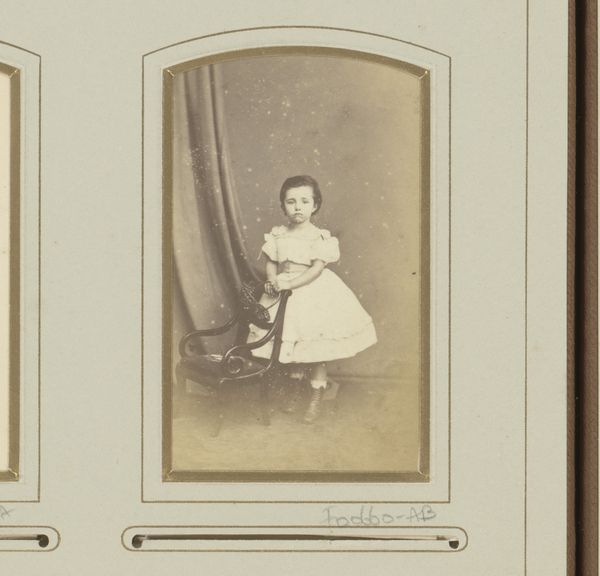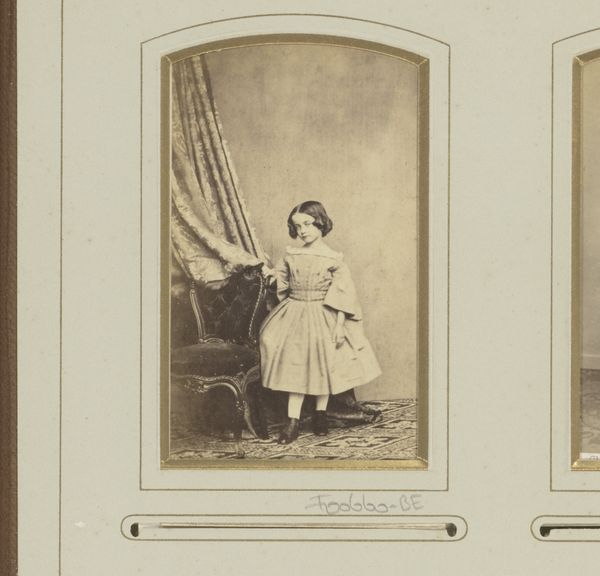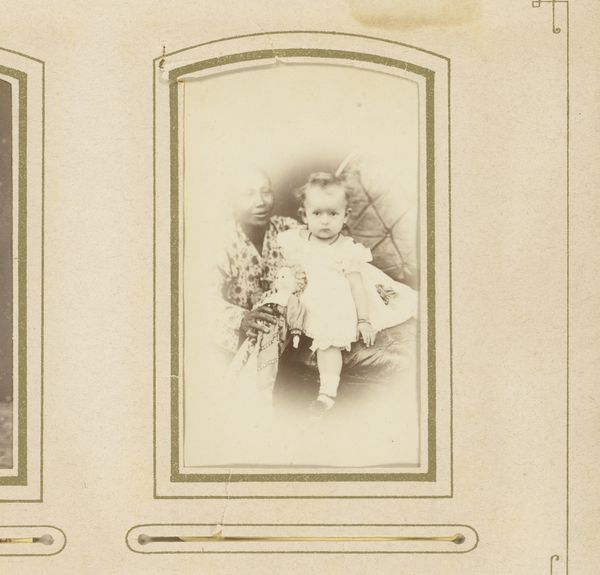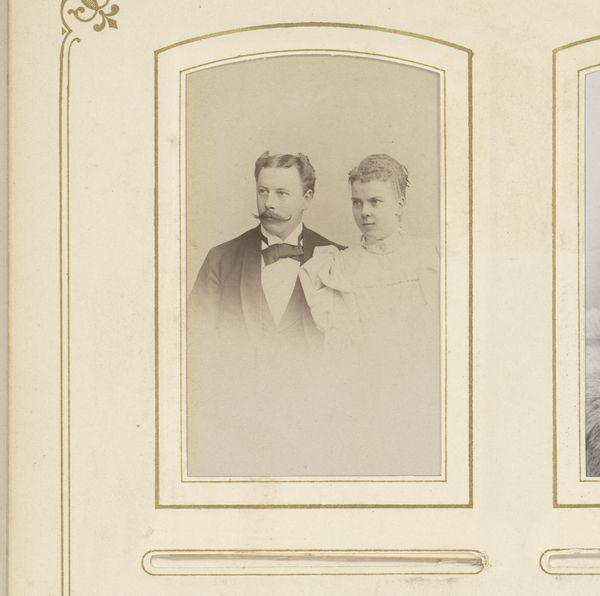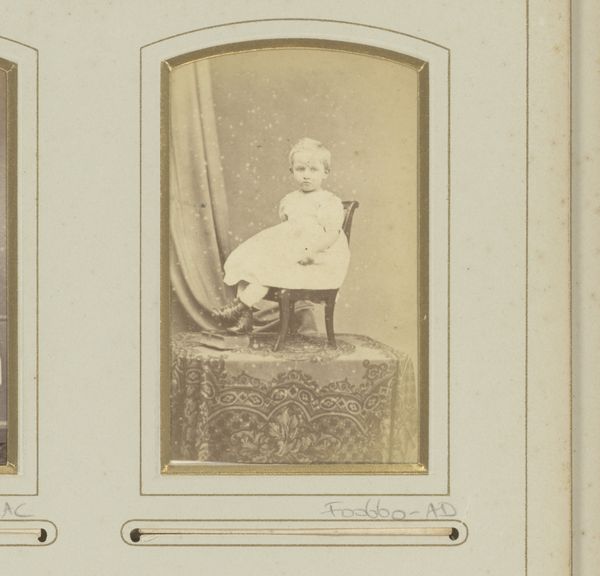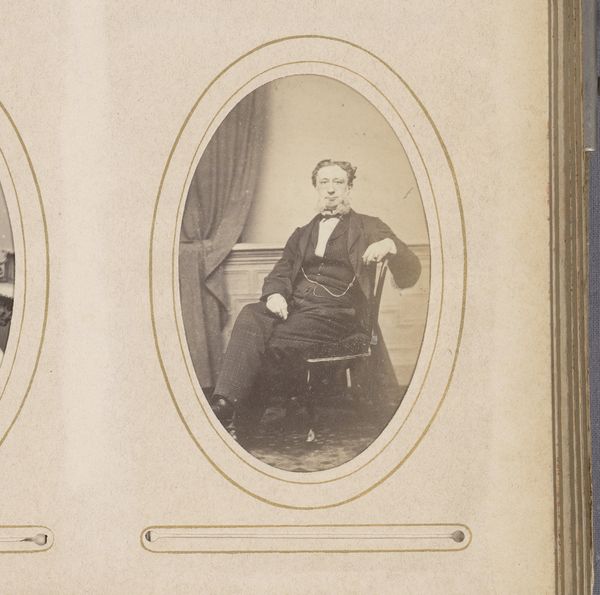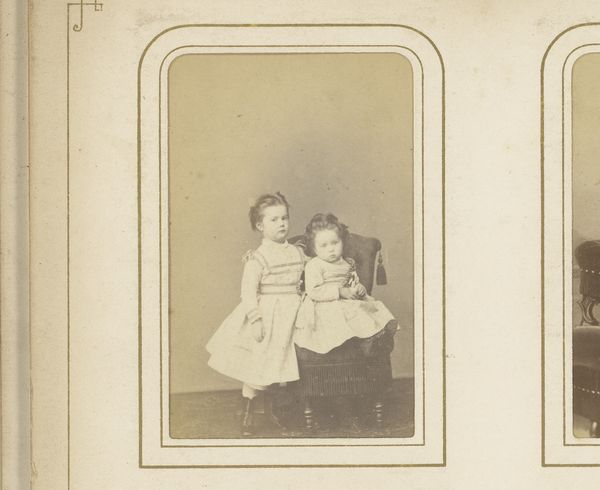
photography
#
portrait
#
photography
#
19th century
#
genre-painting
Dimensions: height 82 mm, width 50 mm
Copyright: Rijks Museum: Open Domain
Editor: So, this photograph is titled "Portret van grootmoeder met kind," dating from between 1860 and 1880. It's a poignant image, and it makes me think about how we capture family memories across generations. How do you interpret this work? Curator: The photographic medium itself speaks volumes. The sitter’s pose, the slightly blurred edges, and the sepia tones—all contribute to a powerful image embedded with cultural memory. It’s not just a grandmother and child; it’s an archive of tenderness, familial duty, and even mortality, given the historical context. Do you notice how the grandmother’s striped dress contrasts with the child’s soft clothing? Editor: I do, actually. Is there a significance to that contrast? Curator: Absolutely. The stripes could symbolize her role and social expectations. This juxtaposition with the baby in white underscores generational hopes and pure innocence. Think about how artists, consciously or unconsciously, loaded clothing with meaning throughout history. What emotional impression do you get? Editor: A sense of love, definitely. But also, a hint of solemnity, maybe from their serious expressions and somewhat rigid pose? It seems almost formal. Curator: Precisely. It speaks to the weight attached to portraiture during that era, capturing a specific moment and preserving a familial narrative. The careful arrangement, the lighting – everything feels carefully considered to convey their relationship. Editor: I see what you mean. I didn’t think about the formality and historical intent initially. Thank you; I appreciate your reading! Curator: Of course! I learned by seeing things through your eyes as well, observing that you quickly appreciated the human element embedded within the cultural symbolism.
Comments
No comments
Be the first to comment and join the conversation on the ultimate creative platform.
